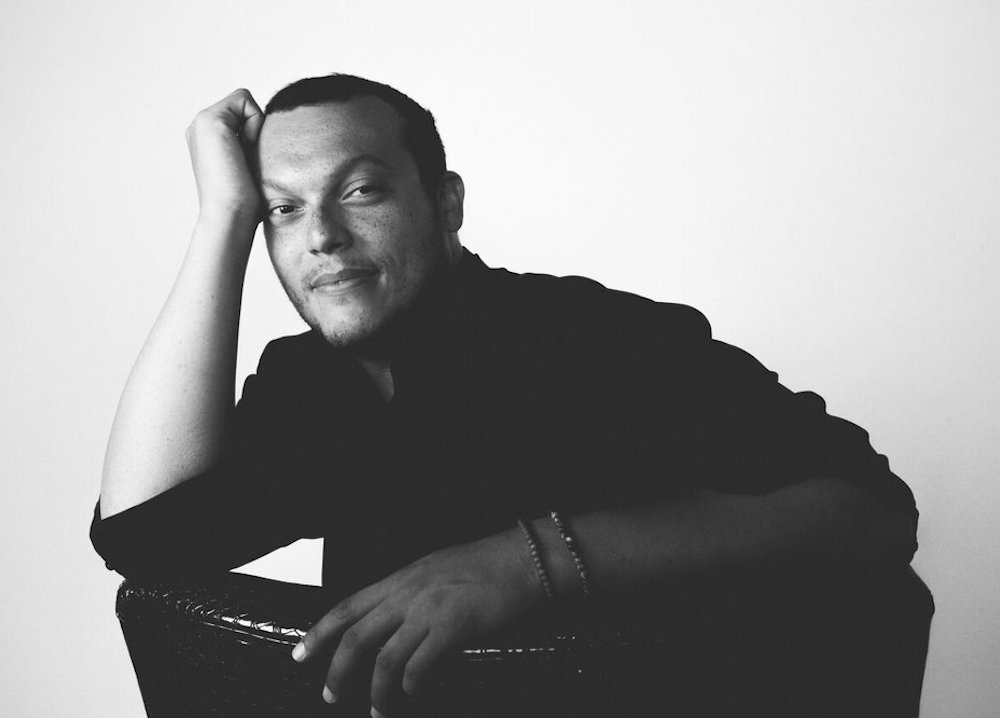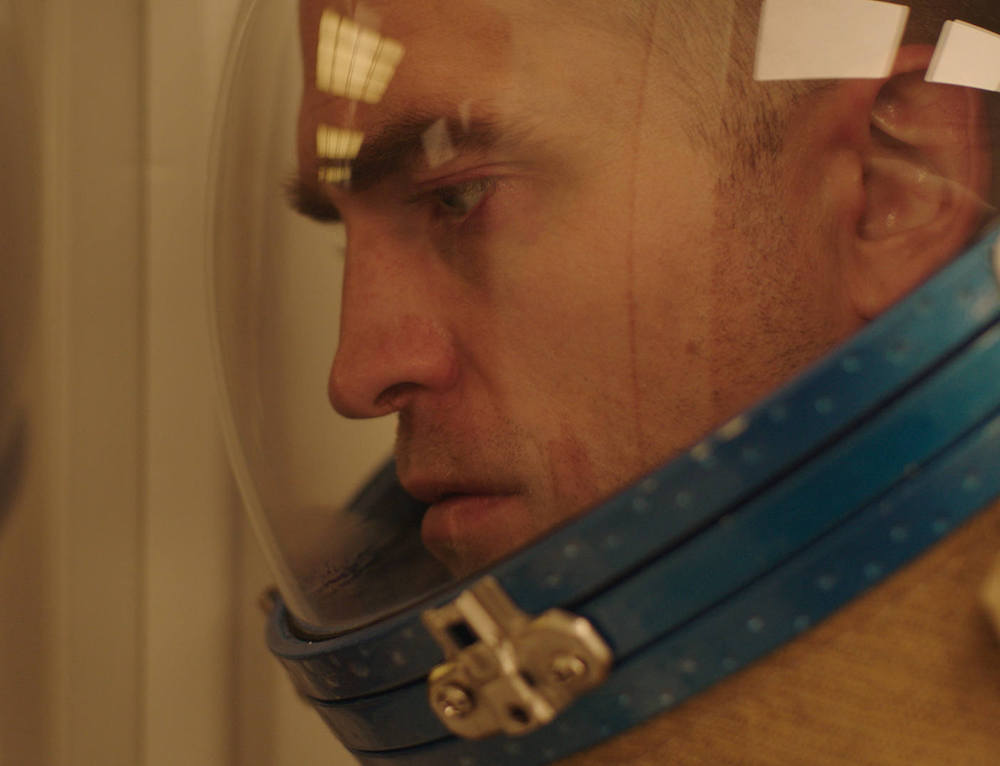I worry that I never quite say what I mean. I think about this especially when talking (and writing) about books. Finding language to describe other language is a strange task—the overlay of text on text makes it difficult to distinguish between what is true, what is deeply felt, and what only appears to fit. In moments of particular disorientation, I find myself returning to the poem “Song” by Charif Shanahan, and these particular lines: “I need to learn / not how to speak, but from where.” Here, I begin to remember that my language has not appeared out of thin air. My parents’ voices, the landscape of my hometown, the local pronunciations, the topics and issues that were revealed and concealed by my neighborhood, my class—an abridged list of all the many things that inflect my ideas and word choice. Remembering these tethers makes me imagine what tethers I might cast forward. I love “Song” and the collection it belongs to, Into Each Room We Enter without Knowing, for how they remember and remind us of the bodies and voices that reach us at every turn. There’s the loneliness of walking at night and passing the sounds and lights of a gay bar; there’s more immediate physical touch, a man “slipping the tongue / through the body’s shutters”; there is violent homophobia and racism, everywhere. Shanahan never makes anything mundane or belittled by comparison. He allowed space for much to be consequential. People and things, violent or kind, arrive and inflect, whether by inches or miles. When I read Into Each Room, I feel so precisely situated in a constellation. Whether the individual strands are clear or obfuscated, I am sure there is a web around me. I am beginning to understand, too, that it’s possible to cast out from here with intention. I look around and see if my words are beginning to build a where that I want to be a part of, and continue speaking into. —Spencer Quong
Where do memes go when they die? What is the half-life of a viral phenomenon? Are we cursed to swim in our own digital filth for eternity? Perhaps none of these questions is worth thinking about for too long—at this point, the internet is what it is—yet each holds a permanent residence in my brain. Continuing to live online can often feel like a sick joke, or a rambling anecdote told by a stranger at a party, but sometimes webs form, jpegs align, and my attention to this space that isn’t actually a space is rewarded. Case in point: the reemergence this week of the internet icon Bangs (or Ur Boy Bangz), a Sudanese Australian rapper who wants to take us places. I suppose most artists aspire on some level to transport their audience, but Bangs literally wants to take “u” to a theater, to a restaurant, to a coffee shop. In 2009, my brothers and I gathered around a desktop computer and snickered at his earnest ode to date night, “Take U to Da Movies.” We decried its sweet and silly lyrics (“Hey, shorty, you really looking nice / Let me take you to the movie ’cause I know you like”) and mercilessly berated the buzz of its gnatty melody. The joke was on us. Ten years later, I’m humming Bangs’s new destination-based tunes as I wait in line at a pricey Italian sandwich shop. There’s “Take U to Starbucks,” about wanting to start the morning off right by buying someone a five-dollar cup of joe. There’s “Take U to McDonald’s,” in which Bangs brags about getting the best deals at the drive-through. And then there’s the crown jewel of this fast food trilogy, “Take U to KFC,” a lurking, swaggering banger whose fluty beat recalls Future’s smash hit “Mask Off.” Much of hip-hop is elaborate posturing and braggadocio, but Bangs chooses to flex in the most banal way possible: by purchasing a standard amount of food from the most basic fried chicken restaurant in the world. Somehow, listening to this makes me feel invincible. That feeling won’t go away, even if Bangs has since renounced fast food and attempted to scrub all traces of his trash-cuisine triptych. But he should know better than anyone that once you release something onto the internet, it doesn’t die. It enters the stream. It feeds into the pool. It dances on and on. —Brian Ransom
Growing up, I regularly scoured my local library for any books that vaguely mentioned mermaids, so when I heard about Domenica Martinello’s forthcoming poetry debut, All Day I Dream about Sirens, I requested a copy based on the title alone. But the poems surpassed my highest expectations; they are so deeply clever that every few pages I was reaching for sticky notes to flag stanzas and trying not to shriek with glee. Martinello evaluates the persistent image of the Siren as an object of both fantasy and horror, adopting the voices of mermaids from Homer to Starbucks to create an examination of branding, embodiment, and personal identity under capitalism. Her poems read like a contemporary Greek chorus, proffering up trees and tides and gasps through an enviable command of lyric and form. In “Thirteen Ways to Optimize Your Underwater Brand,” she unfurls a critical recollection of mermaid lore: “various ages spawn a lolling trollop // animal pastiche // high camp // niche // bestselling Barbie // rainbow titillation // underage hair combing with a fork.” Her observations rest on these sharp turns, which can transform something beautiful into a threat across a single line. Martinello’s sirens come to represent a form of empowerment that balances on the edge of objectification, a dichotomy she recognizes within her own history. In “Hapax Song,” she asks, “What do you know / about ethereal? About being startled / like a drawer of dropped forks?” I wanted to scream these poems off a cliff, whisper them at the water’s edge, trail them down the arm of everyone I meet. —Nikki Shaner-Bradford
There should be more projects like Keeping / the window open, an anthology from Wave Books that compiles interviews, poems, prose, ephemera, and images to illustrate the life and work of Keith and Rosmarie Waldrop. The form itself is an homage to the palimpsest of their careers. Edited by Ben Lerner and introduced by Aaron Kunin, this anthology takes seriously both its subject and its readers. The work contained within the book’s satisfyingly oversize trim measurements (it’s a hybrid: part art book, part paperback) demands careful attention. You can’t breeze through this amalgam by skimming, or cheat your introduction to the Waldrops, who, when they weren’t practicing their own art, cofounded and ran Burning Deck, a small-press bastion of the late-twentieth-century avant-garde. There’s a particularly brilliant essay on the art of translation, along with a copy of Keith Waldrop’s dissertation “Aesthetic Uses of Obscenity in Literature.” Open to any document and dive in, but know that you hold in your hands something much more than the sum of its parts. —Lauren Kane
The first twenty minutes of Claire Denis’s High Life are almost sweet—a simple story of a father raising his infant daughter. The catch: they’re on a spaceship in the near future that functions as both a jail and a laboratory. All the other inmates are now dead, the ship is outside the earth’s solar system, and this is the calm after a long storm. As he tinkers with a water-recycling system, the father instructs his child: “Don’t drink your own piss, and don’t eat your own shit. That’s what we call a taboo.” The child squeals “tab-boo, tab-boo” in response, and we’re off. What follows is an exploration of various transgressions—both of social boundaries and cinematic structure. The narrative lurches back and forth in time, stumbling, like the inmates on the spaceship, from calm contemplations of galactic vistas to brutal moments of violence. Denis pulls no punches. Rape, murder, and masturbation are all shown unflinchingly. Yet the father-daughter relationship, which never tips over into the perverse, feels like the most terrifying element, ripe with potential danger. As in much of Denis’s work, bodies take the center stage, even in the large cosmic landscape; the horror of the body—its fluids, its needs—seems to be the strange, pulsing force of the movie. High Life is not a “good film,” but it is good cinema. It works on the viewer, disorienting and dislocating, testing the boundaries of what a camera can, and should, allow us to see. The dark box of the theater and the dark box of the spaceship, at some point in the process, meld into one, and the horror of the human world becomes inescapable. This is a film that takes time to process, not because it’s perfect or deeply metaphorical but because it actually dares to represent something true about human nature, about the terror of touch, whether violent or tender. —India Ennenga
from The Paris Review http://bit.ly/2I0Zy2W



Comments
Post a Comment